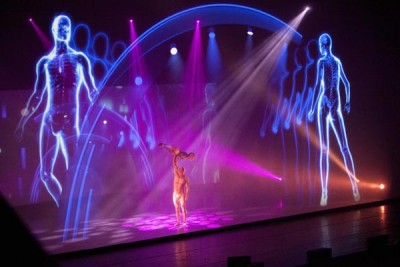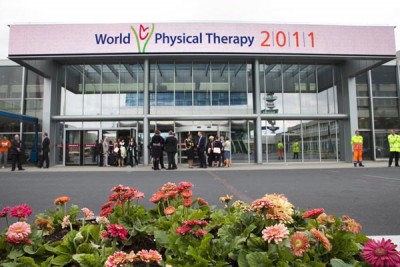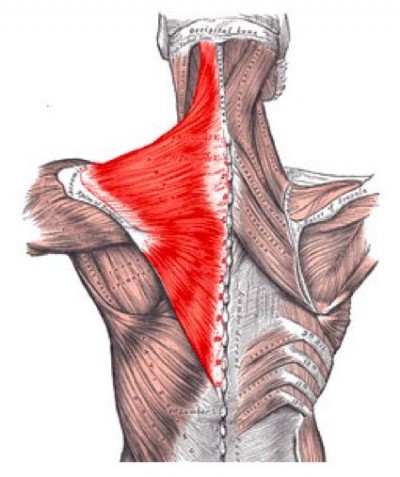Cross-science collaboration augurs well for Weyerhaeuser Hall
TACOMA, Wash. – A funny thing happened on the way to success for four young college researchers. They failed. But as their disappointment over a fruitless experiment sank in, the students decided to take a risk by stepping across two health sciences—physical therapy and neuroscience. On June 23 it paid off. The four students and their advisor, Professor Roger Allen, were one of only three American research groups to receive an international award at the World Physical Therapy Congress in Amsterdam.
Back in the spring of 2010, three University of Puget Sound physical therapy students had ventured to try a novel experiment. They hoped to find a way to assist the therapy of people suffering from afflictions such as chronic headaches, back pain, stroke, and cerebral palsy.
Tonya Bennett D.P.T.'11, Brittany Hodgeson ’08, D.P.T.'12, and Kelsey Wallin D.P.T.'11 decided to test a theory that breathing techniques designed to relax a patient could reduce skeletal muscle tension in the body—a tension which is often a culprit in head and back pain. The breathing relaxation theory was well-known, but had never been proven in scientific literature.Under the supervision of Allen, they trained volunteer subjects for two weeks in breathing techniques. Then they ran an experiment in which they checked the level of activity in the upper trapezius muscle, which runs from the neck to the shoulder, while the subjects performed their relaxation exercises.
They assessed their results— and, disappointingly, the experiment failed. There was no significant difference in the muscle tension of the “relaxed” subjects and the control group.
However, by chance, working with them was Ali Heartman ’10, who was taking courses in the new interdisciplinary neuroscience program. Heartman, also advised by Allen, was separately researching ways to measure a patient’s “body awareness,” that is, how aware a person is of his or her own physical sensations and processes.
Deliberating over their failure with the breathing techniques study, all four students slowly became aware that their subjects had seemed to vary greatly in their body awareness. They decided to rerun the experiment, this time using an instrument, devised by Cynthia Price at the University of Washington School of Nursing, that allowed them to separate the “most aware” and “least aware” subjects.
The new results came in and voila! Subjects with high body awareness did benefit from the breathing techniques.
On June 23 of this year, Allen presented the study to the World Physical Therapy Congress in Amsterdam. The young researchers’ work won the award for “outstanding research presentation” from the International Acupuncture Association of Physical Therapists.
Of the 1,800 presentations at the congress, 28 received research awards. Only three went to researchers from America.
The Puget Sound students’ study, “Relationship of body awareness to the influence of respiratory-based therapeutic relaxation on electromyographic activity of the upper trapezius,” is valuable both for indicating the potential of relaxation therapy in alleviating muscle stress and for showing that consideration of a patient’s body awareness may be a factor in selecting useful therapies for individuals.
“The study attracted an unexpected level of positive attention from the delegates,” Allen said. “From the discussions I heard, it seems these findings may have implications beyond just therapeutic relaxation.”
Allen said the discovery is just a glimpse of the good things that could come from the opening of the new Weyerhaeuser Center for Health Sciences at Puget Sound this fall. The center, named after William and Gail Weyerhaeuser, will house five disciplines—physical therapy, occupational therapy, psychology, exercise science, and neuroscience. It will give both graduate and undergraduate students opportunities to share ideas across the health sciences, to collaborate in clinical work, and to conduct research side by side.“This internationally-recognized study was the product of a real sharing of ideas and perspectives,” Allen said. “Without this collaboration we never would have uncovered these findings.”
Photos: Top right: A 16th century illustration by Belgian anatomist Vesalius, with a weasel added by a student to illustrate pain due to trapezius tension. Top left: Cirque Du Soleil performs at the World Physical Therapy Congress. Bottom right: Entrance to the congress in Amsterdam. Bottom left: Trapezius muscle.
Tweet this: They grabbed victory from defeat! Health science students @univpugetsound win global physical therapy prize. http://bit.ly/o30OLC
Follow us on Twitter! www.twitter.com/univpugetsound




